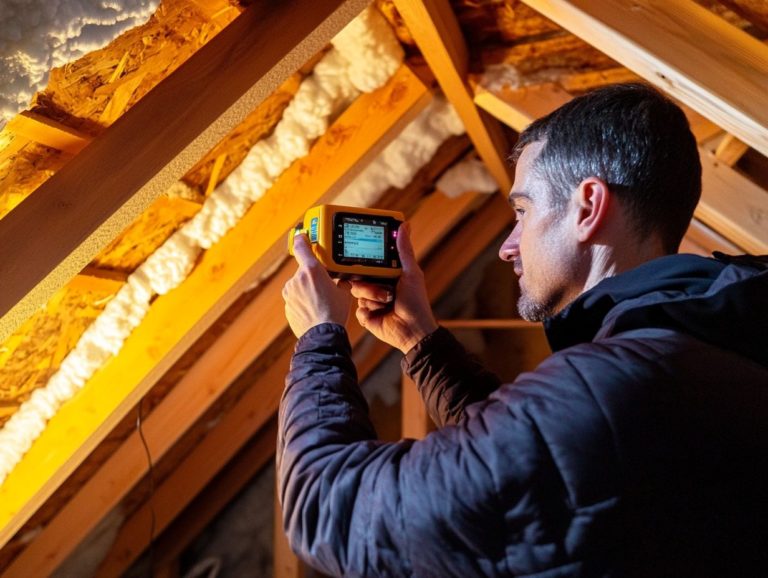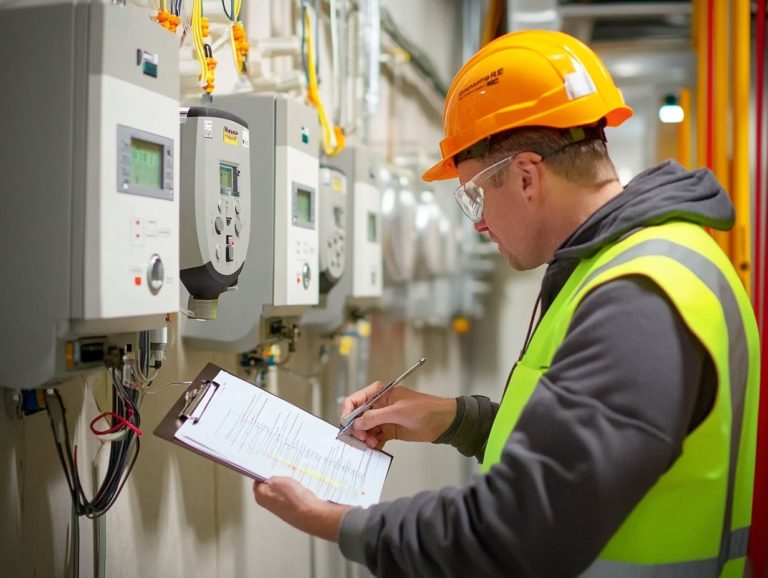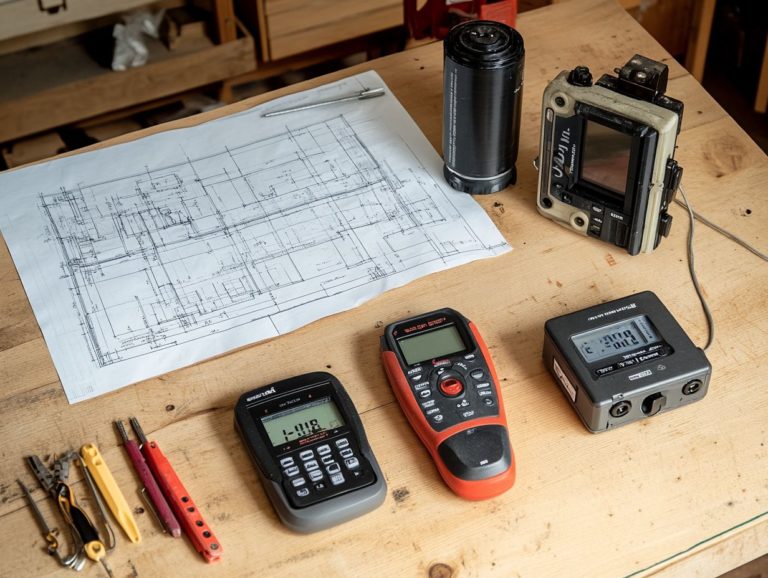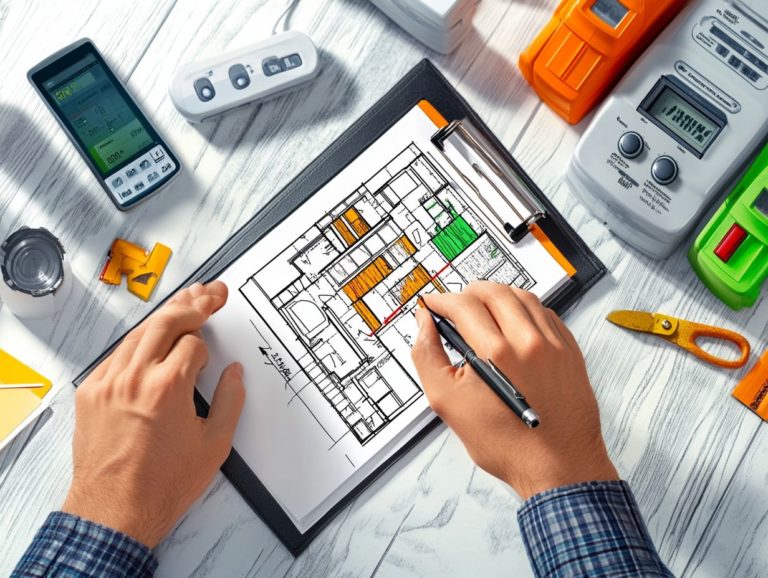The Role of Blower Door Tests in Energy Audits
Energy efficiency is becoming an essential focus in your home and business, not only for cost savings but also for environmental sustainability.
Energy audits play a pivotal role in this journey, finding where energy is wasted and offering insights on enhancing overall efficiency.
At the heart of many audits lies the blower door test, a powerful tool for detecting air leaks and assessing insulation effectiveness.
This article delves into the intricacies of energy audits and blower door tests, their significance, and how you can prepare for one to maximize your home s energy performance.
Contents
- Key Takeaways:
- Understanding Energy Audits
- The Blower Door Test
- Benefits of Blower Door Tests
- Preparing for a Blower Door Test
- Frequently Asked Questions
- Why should I care about a blower door test during an energy audit?
- Who can perform a blower door test and how long does it take?
- What information can be gathered from a blower door test?
- Can a blower door test help save energy and reduce utility bills?
- Are blower door tests only used for energy audits?
- How Often Should Blower Door Tests Be Performed?
Key Takeaways:
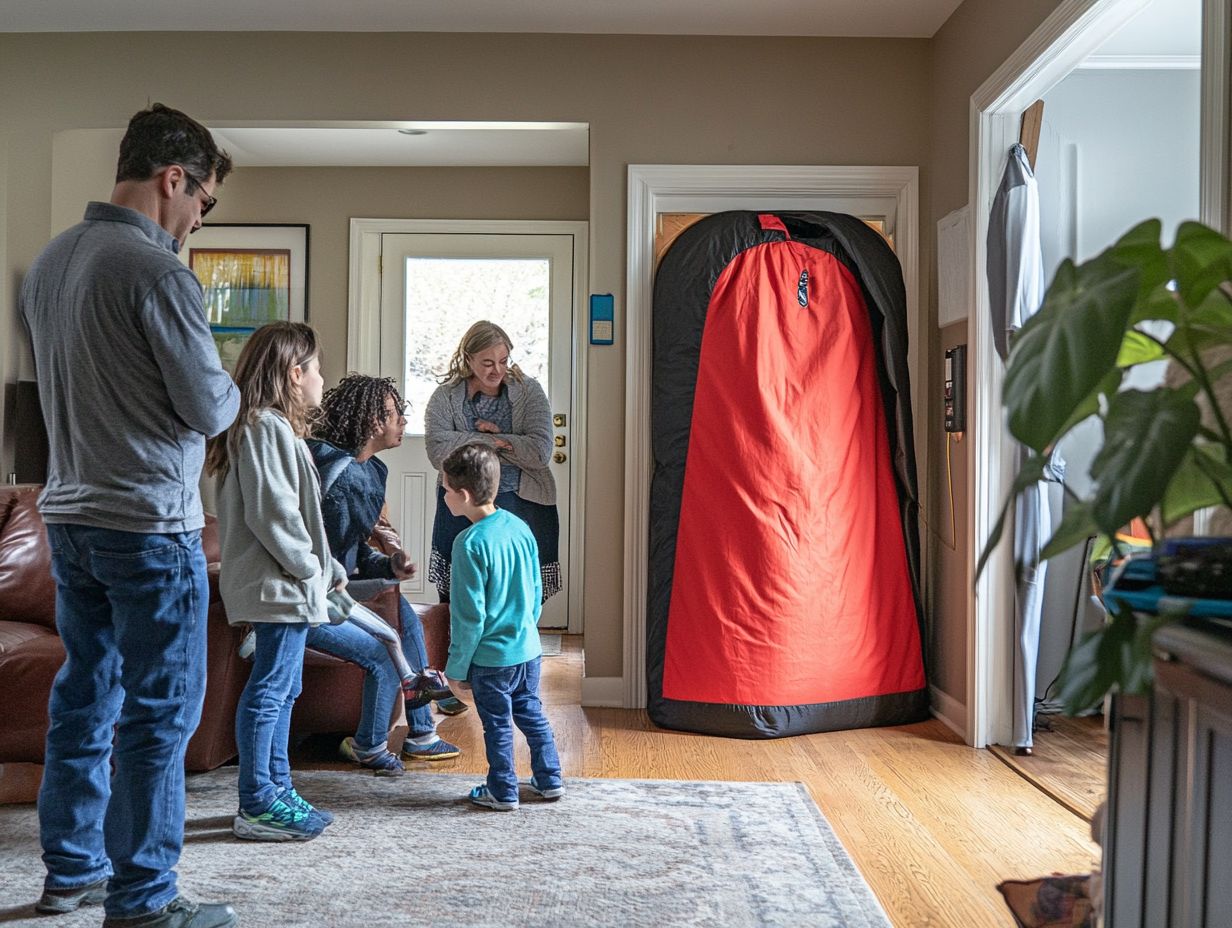
Blower door tests are essential for energy audits, helping to identify and address energy loss while improving efficiency. Through specialized equipment, these tests accurately measure air leaks in a home, providing valuable information for energy-saving solutions. Understanding the role of energy audits in LEED certification is also important. Proper preparation is crucial, including sealing any noticeable leaks, such as using weather stripping on doors and windows, and ensuring all windows and doors are closed during the test.
Understanding Energy Audits
Understanding energy audits is essential for homeowners seeking to enhance their home s efficiency and lower utility bills while ensuring compliance with residential energy codes and standards.
An energy audit serves as a systematic evaluation of your home’s energy performance, finding areas where energy is wasted and recommending cost-effective improvements to elevate your energy efficiency.
An independent energy audit often plays a significant role in this process, offering a thorough assessment and personalized solutions for making your home more energy-efficient.
What is an Energy Audit?
An energy audit is a detailed examination of your home’s energy consumption patterns and inefficiencies, focusing on critical elements like air leakage, indoor air quality, and the effectiveness of your heating, ventilation, and air conditioning systems.
By assessing these key aspects, the audit uncovers areas for improvement and equips you with actionable solutions. Various types of assessments can be conducted, ranging from straightforward walkthroughs to comprehensive evaluations utilizing advanced tools.
For example, infrared imaging plays a crucial role in detecting air leaks that often go unnoticed, revealing hidden thermal inefficiencies. These analyses culminate in tailored recommendations aimed at enhancing your overall energy efficiency, reducing utility bills, and elevating your comfort at home.
Energy audits are a game-changer for anyone wanting to cut costs and boost efficiency!
Why are Energy Audits Important?
Energy audits offer valuable insights for homeowners, significantly enhancing energy efficiency and leading to substantial savings on utility bills while ensuring compliance with energy regulations.
These assessments identify where energy is slipping through the cracks and recommend practical enhancements, such as upgrading insulation or replacing outdated appliances.
If you re aiming for renovation grants, securing a compliance letter from an energy audit is crucial as it demonstrates your commitment to meeting necessary standards.
By dedicating time to this process, you can unlock significant reductions in energy consumption, translating into lower monthly expenses and a smaller carbon footprint. Ultimately, this journey contributes to a more sustainable future for everyone.
The Blower Door Test
The blower door test is a key element in energy efficiency evaluations, specifically designed to measure the air tightness of residential buildings. By identifying air leaks, this test plays a vital role in boosting overall energy performance.
It entails temporarily sealing external openings and using a pressure gauge to assess airflow, allowing for a precise calculation of air changes per hour. This measurement not only quantifies the effectiveness of air sealing measures but also guides you toward creating a more energy-efficient home.
Ready to save on your energy bills? Start your energy audit journey today!
What is a Blower Door Test?
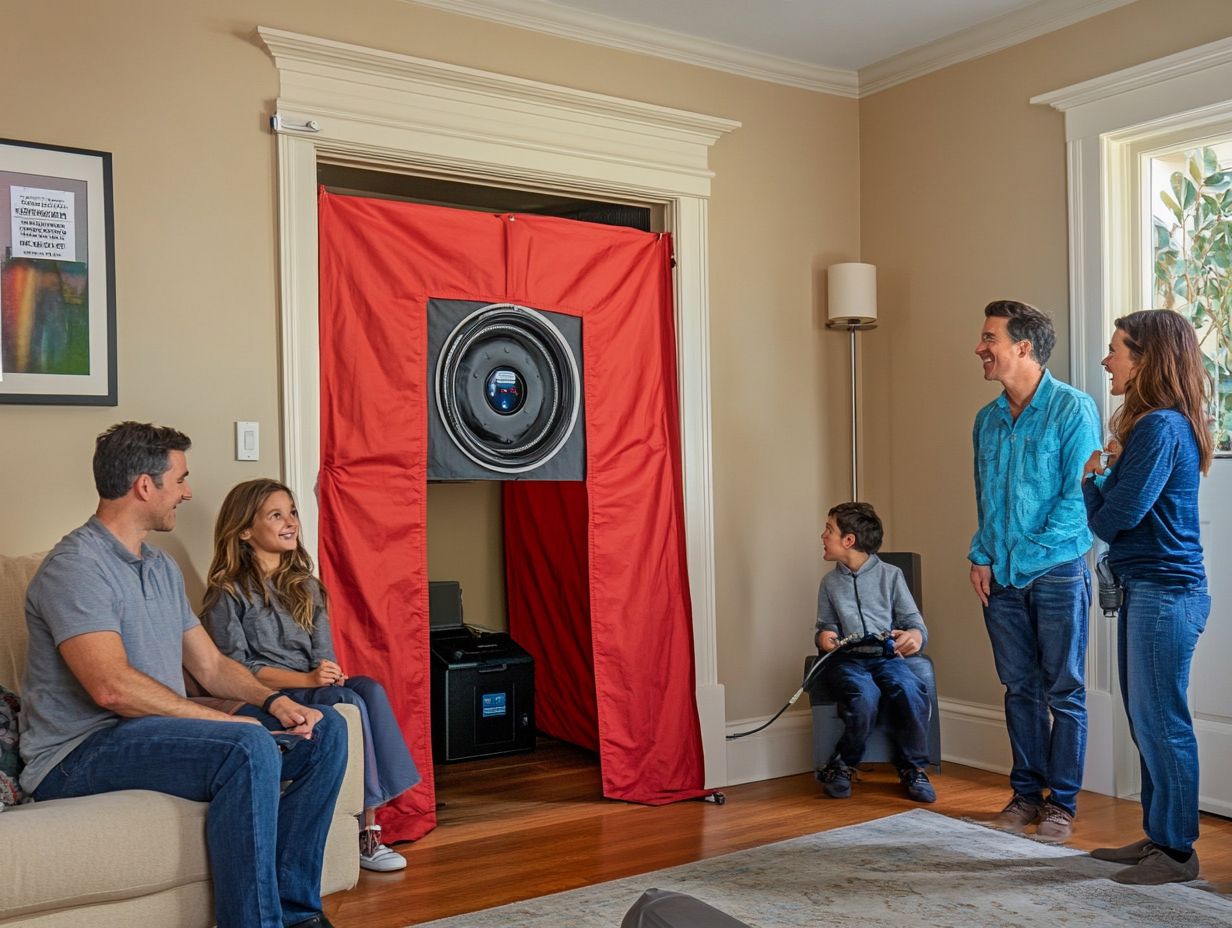
A blower door test serves as an advanced testing method employed by energy audit companies to evaluate your home’s airtightness by measuring how much air infiltrates and escapes through external openings.
During this assessment, professionals use specialized equipment, notably a powerful fan installed in a door frame. This fan creates a controlled environment that simulates various wind pressures. Accompanying this apparatus is a manometer, which is a device that measures air pressure.
As the fan pulls air out, the resulting pressure drop unveils crucial insights into unwanted air leaks around windows, doors, and other penetrations in your building’s envelope. By pinpointing these vulnerabilities, you can make informed decisions to enhance energy efficiency, ultimately leading to greater comfort and reduced utility costs.
How Does it Work?
The blower door test works by creating a controlled pressure difference between the inside and outside of your building. A powerful fan, connected to a pressure gauge, measures airflow and assesses airtightness.
This process kicks off with the fan being installed in a doorway, which then either draws air out of your space or pushes air in, depending on the measurement you need.
As the fan operates, the pressure gauge monitors the difference in air pressure. An experienced technician will meticulously adjust the fan speed to establish a baseline measurement, ensuring that the airflow data is accurate.
Once the optimal pressure is achieved, the unit calculates how much air is entering or exiting the structure through any potential leaks.
These findings are crucial, as they highlight specific areas where air leakage occurs. This offers you valuable insights that can enhance energy efficiency and improve comfort levels in your space.
Benefits of Blower Door Tests
Blower door tests provide a wealth of advantages for homeowners, particularly in identifying and quantifying air leaks that lead to energy loss and soaring utility bills.
- By accurately pinpointing these inefficiencies, you can take targeted action to enhance your home’s energy efficiency.
- Ultimately, this leads to significant cost savings over time.
Identifying Air Leaks and Energy Loss
One of the primary advantages of conducting blower door tests is their remarkable ability to pinpoint air leaks, which significantly contribute to energy loss in residential buildings.
These tests create a controlled environment that enables you to measure the air changes within your home, accurately identifying where those pesky drafts and gaps are lurking.
By understanding the locations and sizes of these leaks, you can take actionable steps to curb energy loss, resulting in lower utility bills. The insights you gain from blower door tests empower you to prioritize energy-efficient improvements, such as sealing gaps, adding insulation, or upgrading windows.
This not only improves your comfort but also helps the environment.
Improving Energy Efficiency
Blower door tests are essential for enhancing energy efficiency, offering you valuable insights that can lead to effective air sealing and the optimization of your HVAC systems, ultimately boosting your home’s overall performance.
These tests measure how airtight your home is, enabling you to identify precise areas where energy loss occurs, often due to leaks around windows, doors, and other structural gaps.
By pinpointing these weaknesses, you can make informed decisions about which air sealing methods to adopt, such as caulking or adding weather stripping.
Understanding your home s air leakage patterns allows for strategic upgrades to your heating and cooling systems, ensuring they operate more efficiently and effectively.
Ultimately, this crucial data gives you the power to create a more comfortable living environment, all while reducing your utility bills and minimizing your carbon footprint.
Don’t miss out on these savings! Schedule your blower door test today and start saving on your energy bills!
Preparing for a Blower Door Test
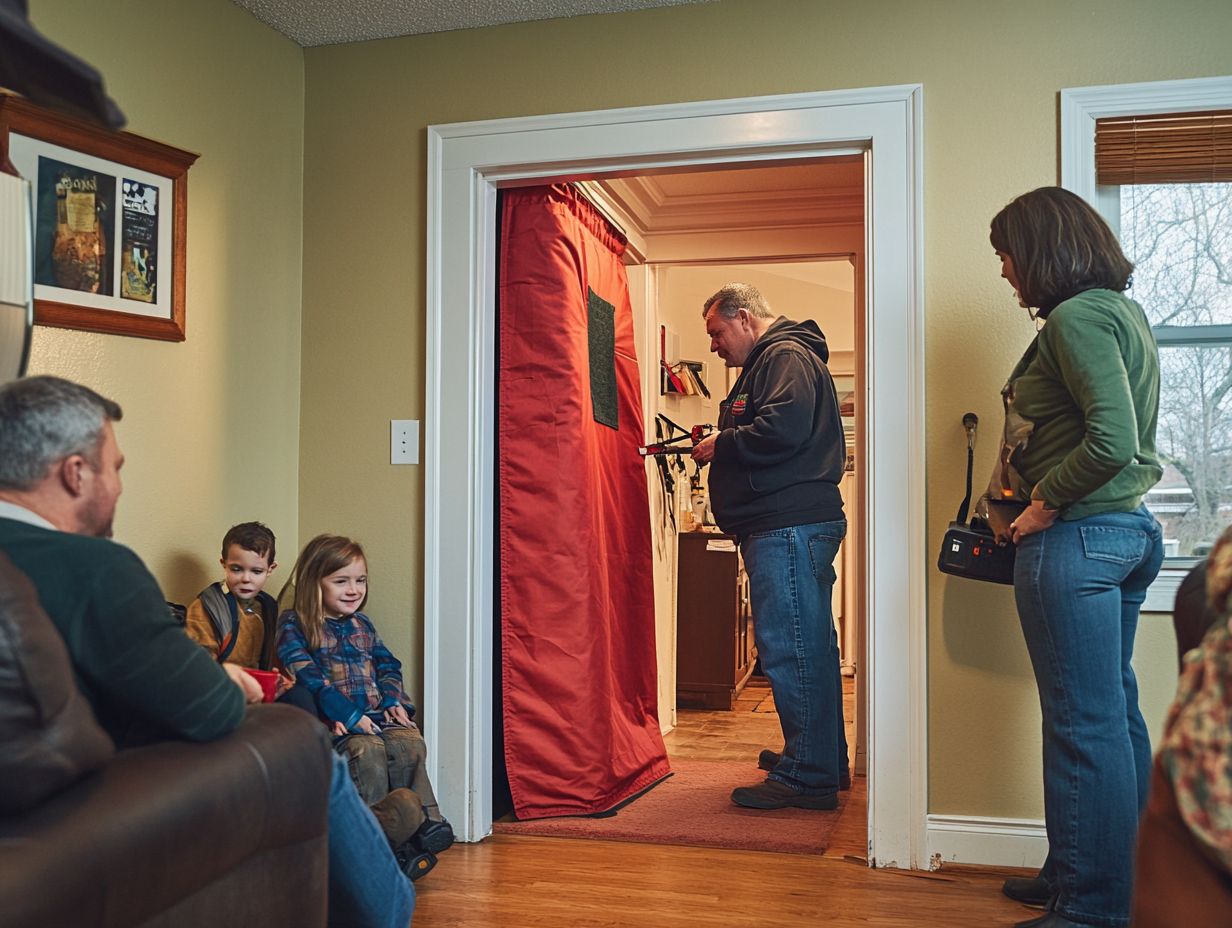
Preparing for a blower door test entails several essential steps to guarantee precise results.
First, assess your home s air systems and resolve any preliminary issues that could affect the testing process.
By preparing correctly, you enhance the reliability of the test and contribute to a more effective energy assessment overall.
What to Expect During the Test
During a blower door test, expect a meticulous evaluation of your property’s air tightness. A strong fan is used to create a pressure difference, allowing for precise airflow measurement and identification of air leaks.
This process uncovers weak spots where air escapes and enhances your home’s energy efficiency by pinpointing areas that could benefit from weatherization.
Technicians will set up the equipment, including the fan, measuring device, and various sensors, ensuring a thorough assessment of your home s envelope.
You ll be kept informed about each step and what the data reveals throughout the test.
Once completed, you ll receive a comprehensive report detailing the findings and tailored recommendations to improve your energy performance and indoor comfort.
How to Prepare Your Home
To prepare for a blower door test, ensure your property is primed by sealing all windows and doors, checking for potential air leaks, and confirming that your air systems are functioning properly.
Inspect areas such as electrical outlets, ductwork, and gaps around plumbing or light fixtures these are often sneaky culprits behind air leaks.
Close all interior doors and dampers to achieve a more accurate measurement of your home’s overall air tightness.
Turn off all combustion appliances to maintain safety during the testing process.
Follow this checklist to get your home ready and boost its energy efficiency!
Frequently Asked Questions
Why should I care about a blower door test during an energy audit?
A blower door test is a diagnostic tool used to measure the airtightness of a building. It uses a strong fan to depressurize or pressurize the building and measures the amount of air leakage.
This test is important in energy audits because it helps identify sources of air leakage, which can significantly impact a building’s energy efficiency and indoor air quality.
Who can perform a blower door test and how long does it take?

Blower door tests are usually performed by certified energy auditors or building professionals trained in using the equipment. The test typically takes 1-2 hours to complete, depending on the size and complexity of the building.
What information can be gathered from a blower door test?
A blower door test provides valuable information about a building’s air leakage rate, which can be used to calculate the air changes per hour (ACH). This helps determine the overall airtightness of the building.
It can also identify specific areas of air leakage, such as around windows, doors, and other building components.
Can a blower door test help save energy and reduce utility bills?
Yes, a blower door test can identify sources of air leakage and guide the implementation of energy-saving measures, such as sealing air leaks and adding insulation.
By reducing air leakage, a building’s energy efficiency improves, leading to lower utility bills and a more comfortable indoor environment.
Are blower door tests only used for energy audits?
No, blower door tests can also determine the effectiveness of air sealing measures and test the airtightness of new construction. They can also diagnose and solve indoor air quality issues and ensure compliance with building codes and standards for energy efficiency.
How Often Should Blower Door Tests Be Performed?
It is best to perform a blower door test every 5 to 10 years. This is especially important when you make significant changes, like adding insulation or replacing windows.
Regular testing helps improve the airtightness of a building. This leads to energy savings and a healthier indoor environment don t wait to check your home!

